
13 Proven Ways to Rescue 404 Page Conversions
Make the effort to invest in your 404 pages, and you’ll turn a user experience challenge into a page that contributes to your growth.
It’s annoying when you land on a 404 page, isn’t it? Since you were looking for something specific, you expected to find it, now what?
Your visitors feel the same way. People land on several million 404 pages every year, and in most cases that traffic is lost because the visitor just goes back to the search engine to try another result.
There is no formal estimate for the amount of lost sales and opportunities caused by landing on 404 pages – though I am sure we can agree that it would be extremely large.
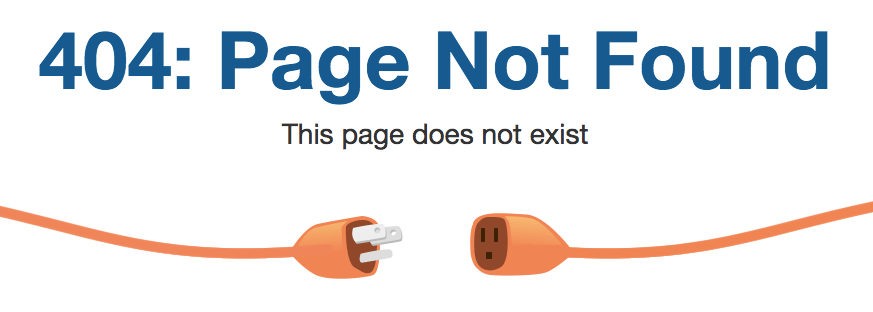
But, this isn’t all bad news, because 404 pages represent opportunities. When someone lands on your 404 page you have their attention. How you use that attention is directly related to how successful your site is in converting visitors.
Some companies use these pages to be creative. They might entertain their visitors with funny videos, gifs or images and silly messages. But why just be cute?
Why not turn 404 errors into revenue, leads, and sales?
Setting Up Your 404 Page for Conversions
1. When people land on your 404 pages you should alert them that they’ve come to the wrong page. Be direct, display a headline or image that expresses 404, and then follow up with an explanation that says something similar to “This page doesn’t exist”. (Not everyone knows what 404 means.)
2. Spend time considering what brought the visitor to your site.
- What are they trying to accomplish?
- What are they looking for?
- What does your company solve?
You need to understand their intent in order to tailor your 404 page best.
3. Tell visitors what to do. At The Good, we see 404 pages every day, and it is clear that many companies do not look at these pages from the visitors’ point of view. Several website 404 pages that we discovered had no mention of how they help customers, and still others didn’t give visitors a way to continue on their site (ie: what should they do next?).
You, and the visitor, want to be successful, however any instructions you provide should also make sense, or people will simply ignore them.
For instance, HubSpot understands why a visitor is coming to their site, and because of this they are able to direct them to the right areas.
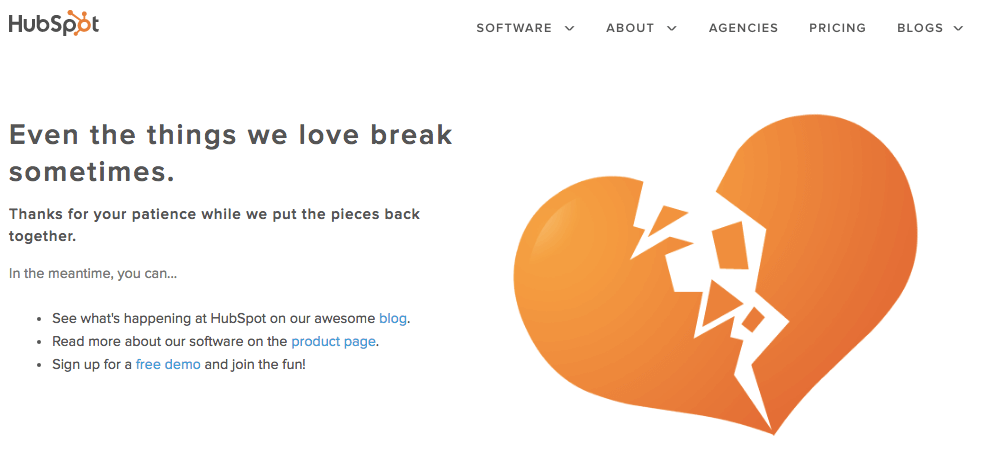
The last bullet point in the image above is where HubSpot can earn conversions from their 404 pages. The page has already explained why they can’t see what they are looking for, redirected them to places they might find the info they need, and then they are given an option to convert. And all three options keep the visitor in the lead funnel.
Tip: One addition Hubspot’s page could benefit from is a search field.
Redirect 404 Traffic to Success
4. Allow users to search. By allowing users to type in their request, your site can more easily deliver the content they were originally seeking.
5. Make the search field prominent enough that it doesn’t blend into the design, and you should add a headline to tell visitors what to do since landing on the 404 page, for example “Search our site for the content you need”.
Example: This 404 page is from NPR.org, where they suggest searching for an article.
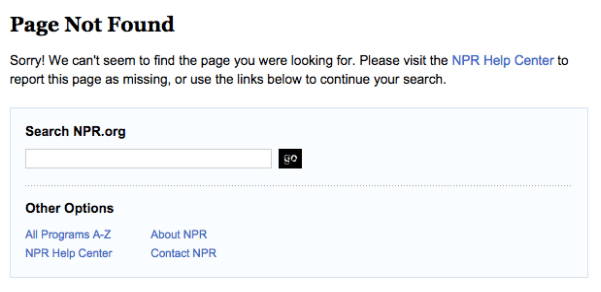
Here, you can see NPR understands their visitor, as most people go to NPR to read an article, or listen to a show. The one issue here is that they take a couple of sentences to explain the search option. With decent headlines, visitors can get the message without reading tiny print, and are more likely to take action.
Blogs are a great place to use a search option for the 404 page. With dozens, if not hundreds, of posts on a blog, people are likely to want to search to find the post they wanted to read. Most blogs made through WordPress have a 404 template. These templates are easy to edit, and allow every site to optimize for conversions.
Humor on 404 Pages
Many companies have turn to humor for their 404 pages. While most of these sites don’t bother trying to convert, it might be confusing to see them without conversion elements.
But, humor can be combined with suggestions for redirects, and it can even encourage conversions. Here is a 404 page from Hillary Clinton that converts visitors into volunteers, and has a small element of humor.

This 404 page references Hillary Clinton’s famous run-in with a NYC subway turnstile.
6. Be positive or humorous. It takes creativity to whip up a message that makes visitors chuckle, while encouraging them to take action, but if done right it can increase conversions even from the least likely of your web pages.
404 Page Conversion Practices for Lead Generation
Now that you’ve got a foundation of how to set up 404 pages, let’s discuss how how these pages can generate leads for your products or services.
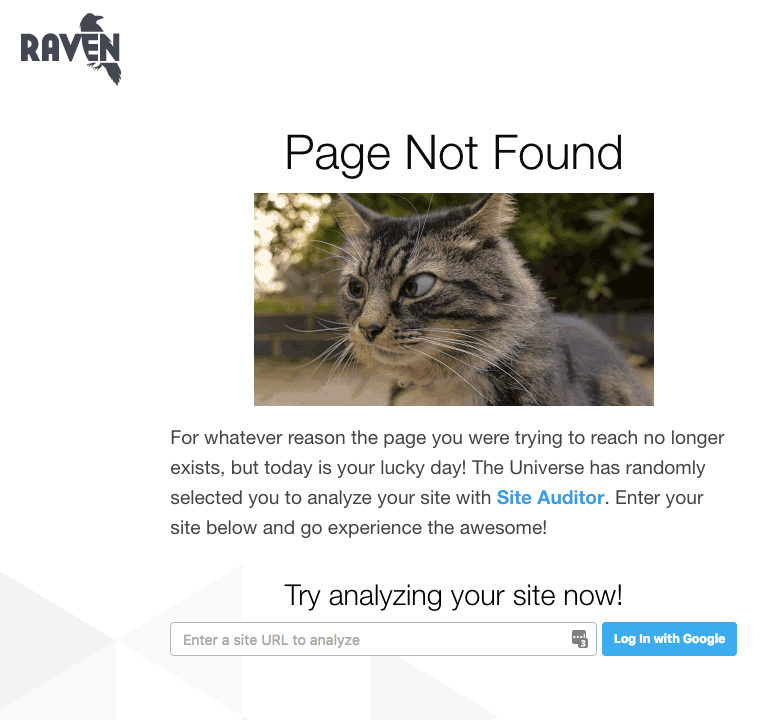
7. Share your latest offer. While focusing on lead generation you’ll be adding new promotions to your website regularly. One way to increase leads is to add your newest promotion to the 404 page. This could be an ebook, checklist, or video.
8. Add an image to your offer. Most people are highly visual, so adding an image to your page will increase conversions.
9. Capture the email address. There’s no reason you can’t turn your 404 page into a landing page. If you are already testing an image of your newest promotion, why not add the email form and collect addresses right there? It might be worth removing any other redirections and testing the page to see what converts best, and helps your visitors most.
10. Test what converts best. Optimizely or similar multivariate testing tools will make improving conversions on your 404 page much easier. You can make instant changes, and add or remove the elements of the site you want to assess. The great thing about these tools is that they tell you when you’ve completed a statistically successful test. Once that is done, you can make more changes for a new one.
404 Conversions for eCommerce Sites
404 pages are a bit different for ecommerce sites. Most likely you will have a higher ratio of non existing pages if you add and remove products from your site regularly.
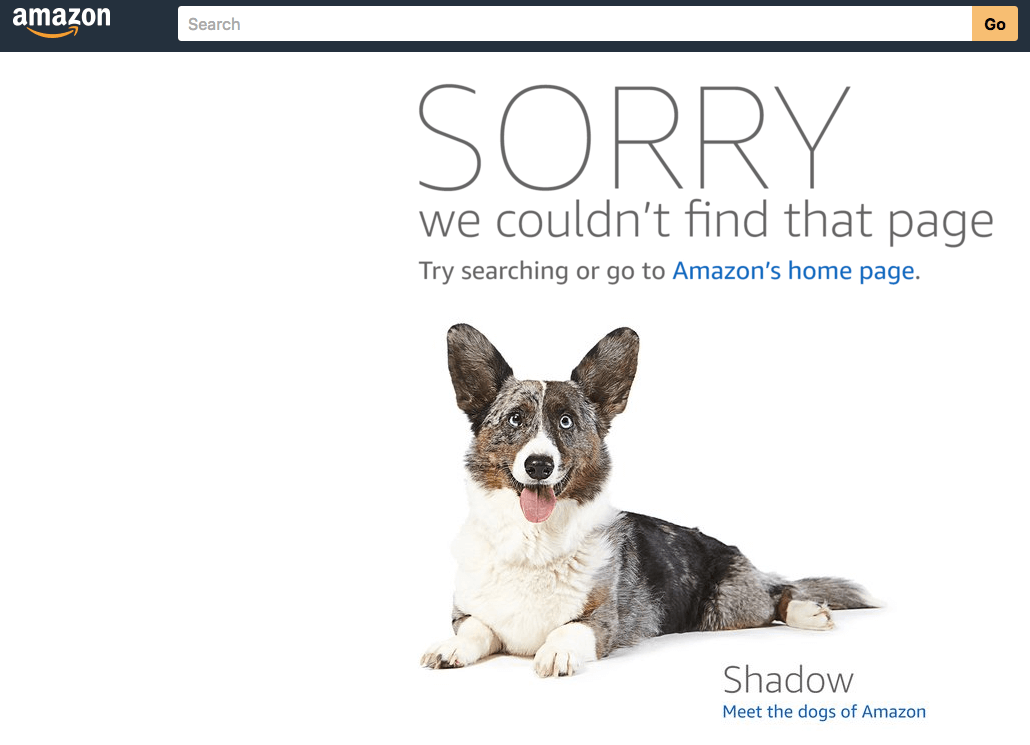
These pages might be more difficult to convert visitors because they were probably looking for a specific item, and they’ll want to be directed to something similar, if not a better replacement.
Here are some ways you can increase visitor success while improving conversions:
11. Redirect, but don’t redirect without notice. It’s quite popular for ecommerce sites to redirect people from discontinued pages to the nearest category page, but there’s a problem with this.
The average visitor would be confused as to why they aren’t seeing the product they hoped to visit. This might cause them to leave the page and return trying to figure out where they went wrong. Put the control back in the visitors hands. Give them a map of choices, and help them redirect themselves.
12. Instead of redirecting them to the nearest category, give them the choice. Explain that the item has been discontinued, and they can visit the category page, search the site, or look at a page of top visited products.
Here is a screenshot of the UnderArmour 404 page, that explains the mistake and offers two other options to continue with the site.
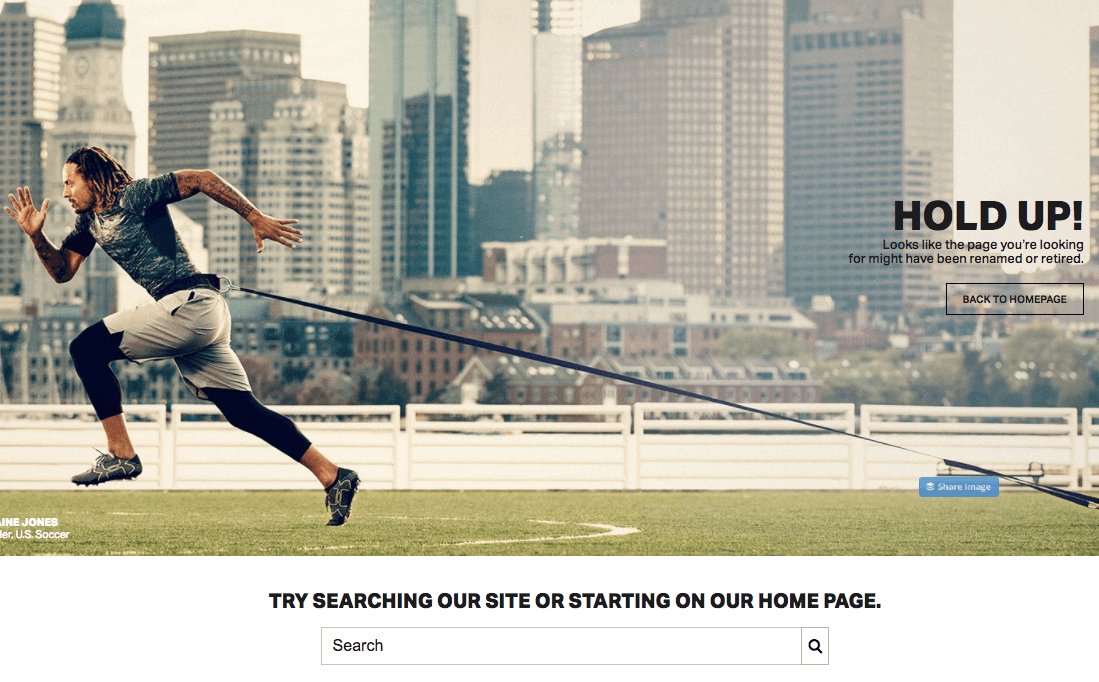
13. Offer a discount. For many years HostGator would offer a 1 cent hosting promotion on their 404 and other error pages. Similarly, Feedly offers the following redirect to their current promotion. Though without some additional context, the user might have been left wondering how they ended up on a promotional landing page.

On the other hand, a discount is a strong reason for the visitor to continue shopping on your site after already being let down.
Don’t Let Your 404 Page Get Lost
While 404 pages are often considered less important than other pages of a site, they stand to be a valuable addition to revenue. It takes time to design and test them, but once they are optimized your company can see several positive results including increased conversions and additional sales.
Make the effort to invest in your 404 pages, and you’ll turn a user experience challenge into a page that contributes to your growth.

About the Author
Jon MacDonald
Jon MacDonald is founder and President of The Good, a digital experience optimization firm that has achieved results for some of the largest companies including Adobe, Nike, Xerox, Verizon, Intel and more. Jon regularly contributes to publications like Entrepreneur and Inc.